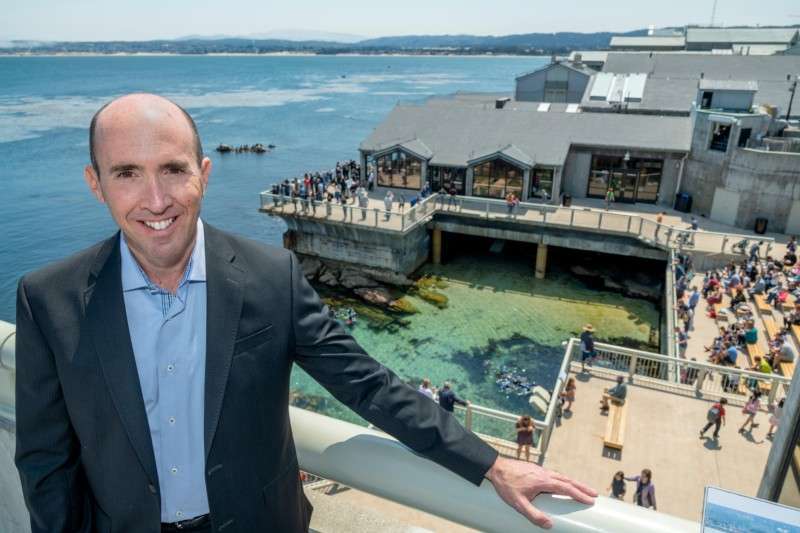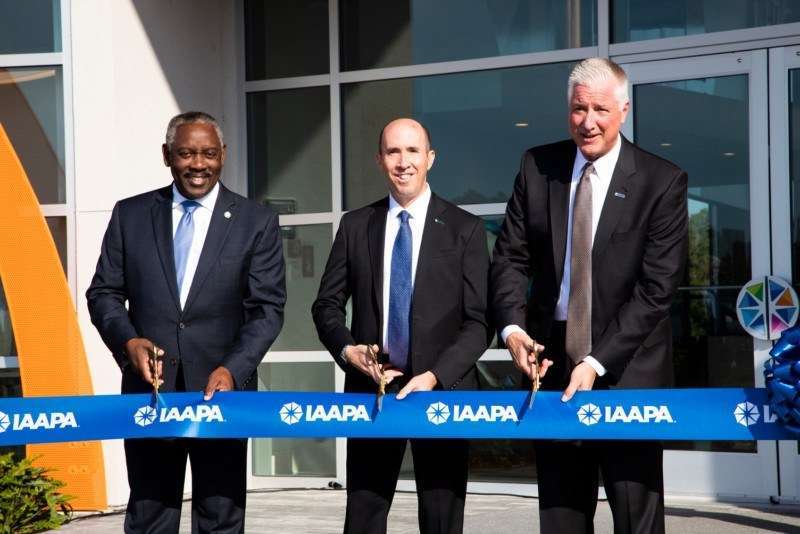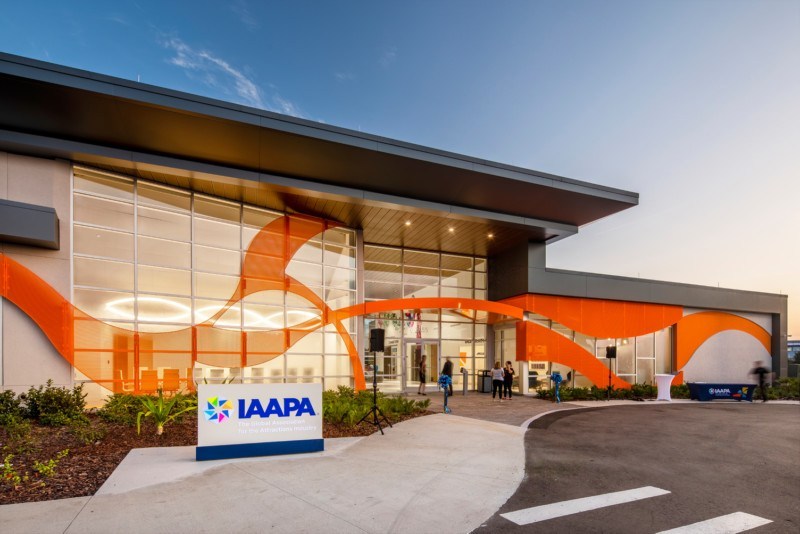interview by Joe Kleiman
UNLESS OTHERWISE NOTED, ALL PHOTOS COURTESY MONTEREY BAY AQUARIUM
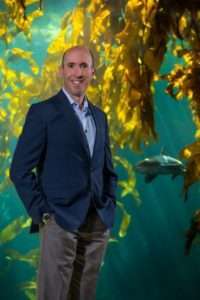
David Rosenberg is the vice president of guest experience at the Monterey Bay Aquarium. He’s responsible for the daily operations, public and fee based programming, volunteer docent programs, interpretive training and is chairman of the Visitor Experience Steering Committee.
Rosenberg serves as the 2019 Chair of the IAAPA Board of Directors, the first representative from the zoo and aquarium community to hold the position. InPark’s Joe Kleiman interviewed Rosenberg about his time at IAAPA and about zoos and aquariums as attractions.
Your Chairmanship of IAAPA began with the announcement of new branding for both the association and its three expos. What sort of feedback have you seen from this change?
The feedback has been outstanding. IAAPA’s new brand truly resonates with the industry – it is vibrant, energetic and inspiring. Likewise, the rebranding of the three expos under the master IAAPA brand has made it easier for attendees around the world to understand the Expo is an official IAAPA event, and has helped to strengthen our awareness. With the grand opening of IAAPA’s new global headquarters in Orlando, the new brand is celebrated and reflected throughout the entire building and helps to emphasize our core values of diversity, inspiration and connection.
IAAPA recently opened its new global headquarters in Orlando. What are some of your favorite features of the new facility?
Where do I start?? The building is the result of input and passion from industry professionals from around the world. From the moment you enter the lobby, the spirit of the industry surrounds you. Every detail is covered – in fact, even the door handles reflect the new brand. In addition to the amazing welcoming area, there is an interactive exhibit dedicated to our members – a great location to reflect on the past, present and future of our industry. The building sits just minutes from the airport and the convention center. It was built with an eye on sustainability and has a small solar farm, electric vehicle charging stations and state-of-the-art mechanical systems. The view, the modern building and the features that highlight the attractions industry make it the perfect headquarters for a global association.
ABOVE TWO PHOTOS COURTESY IAAPA
What have you taken from your leadership role at IAAPA that you’ve been able to apply to your work at the Aquarium?
I had the honor to serve as the first IAAPA chairman from thezoo/aquarium/museum member constituency. This allowed me to bring a fresh perspective to the Board of Directors and clearly provided me with a lot of new knowledge that benefited my own organization. During my travels as the IAAPA chairman, I saw so many great qualities embodied in IAAPA members on every continent. I feel as if I achieved a doctoral degree in international business thanks to the global experiences I’ve had with our members. This truly has made me a stronger leader
What IAAPA events and programs are you looking forward to over the next year?
I have to admit, I look forward to every IAAPA event. There are different components of each event. The expos allow me to get inspired by the many manufacturers and suppliers who are showcasing the latest innovations. The regional events help me to learn more about how attractions operate within specific cultures, and the education and safety programs build critical knowledge about the industry. So, it’s easiest to say, “I look forward to all of the events!”
Moving on to zoos and aquariums, how are they impacting the rest of the attractions industry?
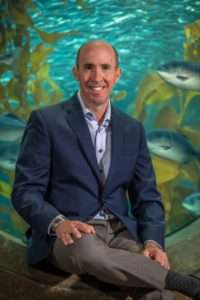
The line between zoos/aquariums and other types of attractions is becoming less defined. Increasingly, zoos and aquariums recognize their success depends on providing exceptional guest experience – something I can attest to from what we do at the Monterey Bay Aquarium. Similarly, many IAAPA attractions have animals under their care – even if they don’t define themselves as a zoo or aquarium. Their success depends on adhering to best practices in animal care and meeting the changing expectations of their guests. I’ve seen firsthand how both sectors are learning from each other. Giving visitors an opportunity to build an emotional connection to the natural world through living exhibits is beneficial. Responsible zoos and aquariums have done this for a long time and they have a lot to share with the entire industry.
Likewise, how is the rest of the attractions industry impacting zoos and aquariums?
When I first became involved with IAAPA many years ago, it was because I saw the value in creating networks with visitor-serving organizations that were not labeled as a zoo or aquarium. There is so much knowledge to be gained from peers who share a common goal of attracting visitors to have meaningful experiences. Through IAAPA, zoos and aquariums have the opportunity to learn about best practices that may not be native to their own sector.
During last year’s IAAPA Attractions Expo, you became the Chair of IAAPA while Michael Mercadante, a zoo exhibit designer, became Board President of the Themed Entertainment Association. Is it important for those in the zoo and aquarium field to pursue board or committee positions within the wider attractions industry? What advice would you give those interested in doing so?
I believe it is, especially with the convergence of identities among organizations that at one time seemed so different from one another. Many zoos now have rides and waterparks while aquariums are introducing various shows and other entertaining experiences. Many attractions have animals as part of their experiences. So, taking leadership positions within the attractions field allows for an even wider bridge to be built between all of the attraction types. We all have so to learn from one another.
What changes have you seen within the zoo and aquarium sector during your more than a decade of employment at Monterey Bay?
Zoos and aquariums continue to become more innovative and more dynamic, and I believe innovation is key to their current and future success. Hybridization has become something of a buzzword in the industry, but it’s true. To meet the changing demands of visitors, zoos and aquariums need to – and are –creating experiences that go beyond just interacting with animals.
Last year, I attended an IAAPA session on how zoos and aquariums can bolster public opinion, with your own Mike Chamberlain among the speakers. What techniques do the Aquarium staff employ to properly convey the institution’s mission and operations to its guests?
There’s abundant data supporting the fact that public attitudes toward animals under human care are changing. Our guests expect us to provide exceptional care to the animals they see when they visit us – and to share more of the details about what goes into that care. They also expect us to be good stewards of the environment and “walking the talk” in our own business practices. I’m proud of the commitment made by IAAPA through its new Sustainability Committee, its efforts to help advance environmental best practices, and the goal to help association members tell that story effectively.
What are some of the zoos and aquariums that you’ve enjoyed visiting?
I don’t have a specific favorite (other than my own, of course!). However, I really enjoy attractions that make great efforts to recreate exhibits that represent the natural surroundings an animal would inhabit in the wild. I have fond childhood memories of “Chester the Bear” at San Diego Zoo. As a kid, we used to visit every summer. This charismatic bear would wave at people as they passed by and was internationally known for his charming personality. Like everyone else, I made a personal connection to that bear in what felt like his natural surroundings. This enhanced the personal connection for me – I still talk about him all these years later.
On October 20, the Monterey Bay Aquarium celebrated its 35th anniversary. Executive Director Julie Packard recently penned a piece on the Aquarium’s first 35 years and its expanding mission for the future. In it, she mentions the importance of social media in expanding the Aquarium beyond its physical boundaries. What role have you played in the development of the social media strategy and how is social media promoted to guests visiting the Aquarium?
I’ve had a minor role in developing the strategy – but I have to say, our Aquarium team is a leading beneficiary of it. We’re finding that our guests ALREADY have a positive relationship with the Aquarium before they walk through our doors. They’re primed to have a great time based on connections they’ve made with our animals and exhibits, through everything from streaming web cams to features about remarkable animals. We include icons about our social media accounts on visitor maps and have kiosk on the floor where they can sign up to get email updates from us. And our guest experience staff knows to alert our social media team immediately when something exciting is happening on the floor. In fact, over the past week the social media team has been alerted to humpback whales leaping off our back decks and our giant Pacific octopus laying eggs. Both were immediately captured by the team and broadcast out to the world as it happened. Our visitors come excited to see what’s next because they know that there are always new things happening at the Aquarium. How cool is that??

Like many zoos and aquariums, the Monterey Bay Aquarium serves as both a community resource and a tourist attraction. From a guest operations perspective, how are those two objectives balanced out?
We strive to be a good neighbor in our community, especially because we’re one of the major visitor attractions in our region. So, we contribute to community solutions that mitigate the impact of visitor traffic, including support for a free trolley service between city parking garages and the Aquarium, and to help our staff get to work by means other than driving alone in a car. We created free-admission programs to overcome price barriers for people who otherwise couldn’t afford a visit, and for nearly 100,000 schoolchildren, teachers and chaperones every year. We also work with local partners and elected officials to reduce single-use plastic in our communities, support a local electric power grid fueled by clean energy and to build up a sustainable local fishing industry. Our community expects us to be a leader in these areas, and we do just that.
This year also marks the opening of the Bechtel Family Center for Ocean Education and Leadership, the Aquarium’s new education facility. From school groups to meeting space, how will this new facility complement the existing Aquarium?
Since the Aquarium opened 35 years ago, we’ve had a commitment to inspiring and educating the next generation of ocean leaders through our free education programs for visiting school groups, teens and teachers. It’s at the heart of our identity and our mission. The opening of the Bechtel Family Center for Ocean Education and Leadership takes that commitment to a whole new level. Thanks to the generosity of our donors, we’re doubling the number of teens and teachers who take part in our programs. And, for the first time in our history, every child who takes part in a school group visit will participate in a program led by one of our staff educators. It’s extremely exciting for us.
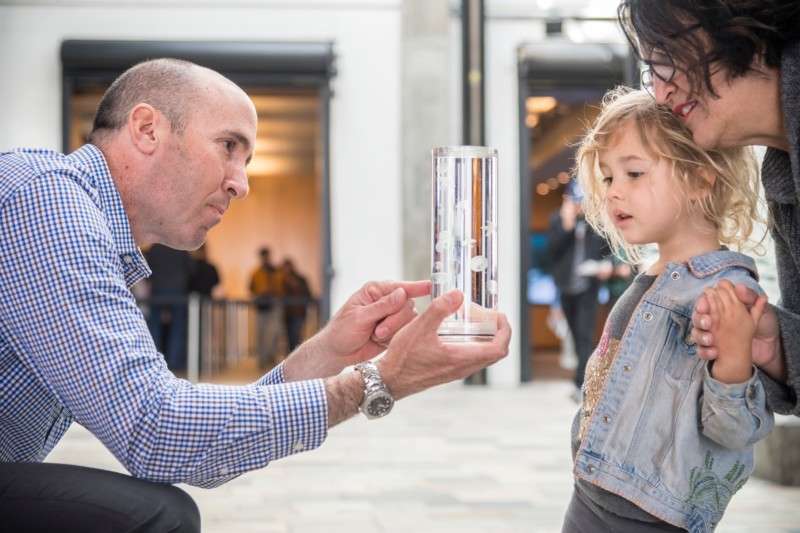
What are some of your favorite exhibits and animals at the Monterey Bay Aquarium?
The Kelp Forest Exhibit is one of our marquee exhibitions, and it, along with the hundreds of animals in the exhibit, is definitely one of my favorites. It represents the perfect balance of nature, innovation, inspiration and technology. When it was designed more than 35 years ago, people questioned if we could replicate a living kelp forest – and if we could, they thought no one would want to see it. Instead, it’s become a timeless exhibit for us. The ability to create currents in the water, utilize salt water straight from the ocean and provide direct sunlight makes it truly one of a kind. My favorite moments are when visitors ask if they are looking into the real ocean. Our staff are well versed on how to tell people that it’s an exhibit, but the ocean looks just like it.

Do you have anything to do with the annual April Fools news stories the Aquarium runs, arguably amongst the best in the industry?
Ha! I wish I were that clever. No, those ideas come from other talented minds at the Aquarium. I’ll be just as surprised as you are to see what they dream up for April Fool’s Day 2020.


